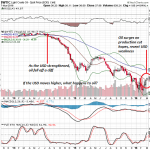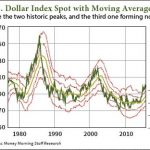One thing that became abundantly clear in the wake of the financial crisis was that everything – and we do mean everything – was being manipulated by Wall Street’s biggest and most systemically important financial institutions.
First we learned that the most important benchmark rate on the planet was nothing more than a tool submitters used to inflate the value of their traders’ books, something we flagged way back in 2009.
Subsequently, all manner of rigging and fixing was discovered across markets from gold, to FX, to ISDA fix. Although chat logs clearly show that there are scores of people who should probably be in jail for conspiring to manipulate markets, the vast majority of those responsible got off scot-free with the notable exception of poor Tom Hayes who was sentenced to 14 years for allegedly serving as the ringleader of a group that colluded to fix LIBOR.
We even found out that banks were rigging the UST market by conspiring to keep the spread between the when issued price and the price at auction as wide as possible.
In short, if it can be manipulated, you can bet Wall Street is manipulating it – or at least they were, until they got caught.
In most cases, the fines leveled against the banks by regulators as punishment for the above are paltry and amount to slaps on the wrist, but when you’re facing a liquidity crunch, just about the last thing you need is to be forced into handing over a few more billion to the government. That’s precisely the situation facing Deutsche Bank, which late last month reported its first annual loss since the crisis along with abysmal quarterly results that have caused the market to question whether Europe’s largest lender may be in trouble.
The reason we bring all of this up is because on Wednesday, we found out that the EU Commission has opened a preliminary investigation into the $1.5 trillion SSA market.
“The commission’s powerful competition department has sent questionnaires to a number of market participants as part of an early-stage probe into possible manipulation of the price of supranational, subsovereign and agency debt,” FT reports. “This market covers a diverse range of debt issuers including organisations such as the European Bank for Reconstruction and Development and regional borrowers like Germany’s Länder. A common feature is that the bonds often have a form of implicit or explicit state guarantee.”













Leave A Comment